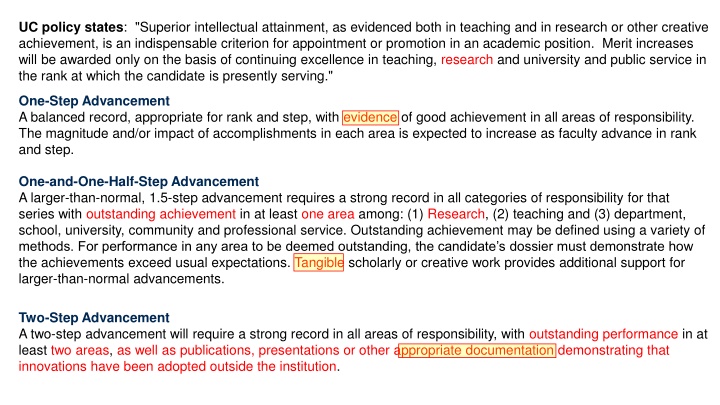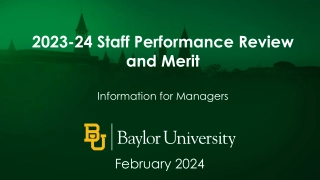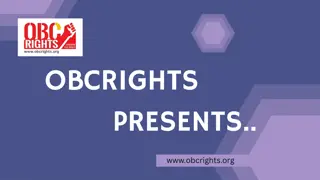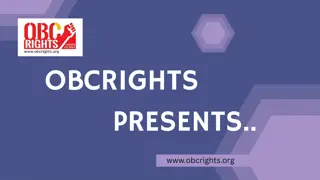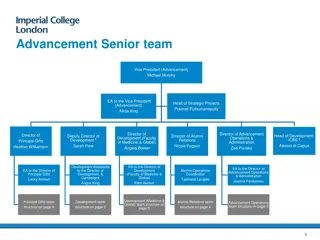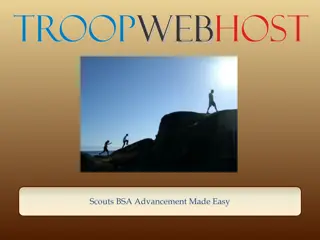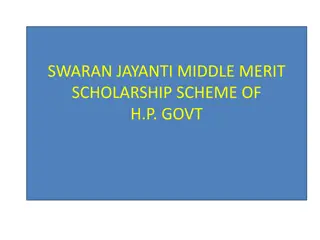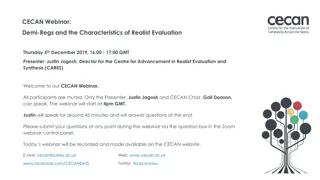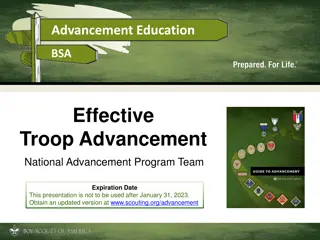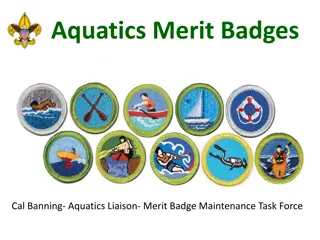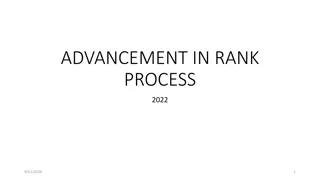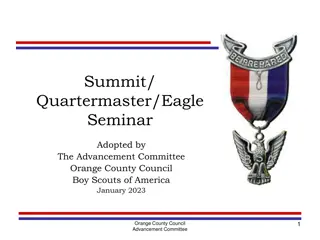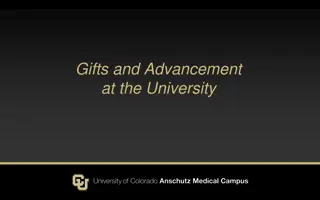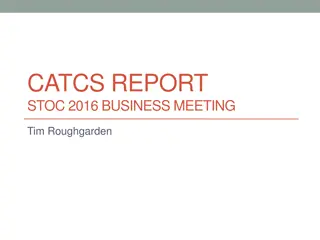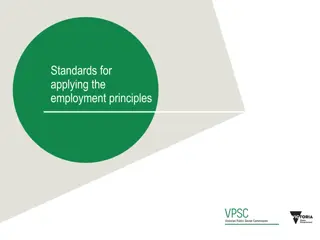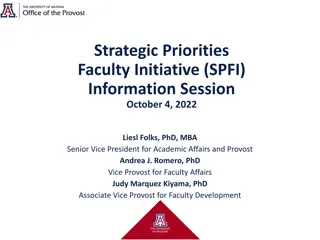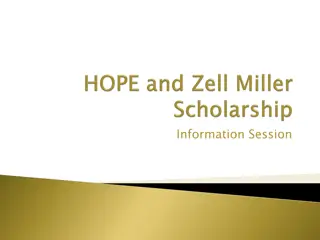Guidelines for Academic Advancement and Merit Evaluation
Superior intellectual attainment in teaching, research, and creative activities is essential for academic appointments and promotions. The UC policy outlines criteria for one-step, one-and-one-half-step, and two-step advancements based on achievements in various areas. Emphasizing the importance of tangible evidence and quantifiable impact, strategies for including quantitative information in merit dossiers are provided. Additionally, resources such as Web of Science and PURE SciVal are highlighted for obtaining documentation to support merit and promotion actions.
Download Presentation

Please find below an Image/Link to download the presentation.
The content on the website is provided AS IS for your information and personal use only. It may not be sold, licensed, or shared on other websites without obtaining consent from the author.If you encounter any issues during the download, it is possible that the publisher has removed the file from their server.
You are allowed to download the files provided on this website for personal or commercial use, subject to the condition that they are used lawfully. All files are the property of their respective owners.
The content on the website is provided AS IS for your information and personal use only. It may not be sold, licensed, or shared on other websites without obtaining consent from the author.
E N D
Presentation Transcript
UC policy states: "Superior intellectual attainment, as evidenced both in teaching and in research or other creative achievement, is an indispensable criterion for appointment or promotion in an academic position. Merit increases will be awarded only on the basis of continuing excellence in teaching, research and university and public service in the rank at which the candidate is presently serving." One-Step Advancement A balanced record, appropriate for rank and step, with evidence of good achievement in all areas of responsibility. The magnitude and/or impact of accomplishments in each area is expected to increase as faculty advance in rank and step. One-and-One-Half-Step Advancement A larger-than-normal, 1.5-step advancement requires a strong record in all categories of responsibility for that series with outstanding achievement in at least one area among: (1) Research, (2) teaching and (3) department, school, university, community and professional service. Outstanding achievement may be defined using a variety of methods. For performance in any area to be deemed outstanding, the candidate s dossier must demonstrate how the achievements exceed usual expectations. Tangible scholarly or creative work provides additional support for larger-than-normal advancements. Two-Step Advancement A two-step advancement will require a strong record in all areas of responsibility, with outstanding performance in at least two areas, as well as publications, presentations or other appropriate documentation demonstrating that innovations have been adopted outside the institution.
Quantitative information (with citations to sources) included in merit and promotion dossiers is stronger tangible evidence and appropriate documentation than qualitative opinions Strategies for including quantifiable significance to research and creative activities in your merit dossier: - The impact of journals in which you publish (Journal IF, Eigenfactor, citation half-life ) - Your overall research impact and it trajectory - Attention your research draws from: other researchers in your filed researchers outside your field media outlets and the general public Where can you get tangible evidence and appropriate documentation in support of your merit/promotion action?
Web of Science ISI Web Of Knowledge The impact of your research on other scientist http://apps.webofknowledge.com/UA_GeneralSearch_input.do?product=UA&SID=8BOiassYUJychEOU5Yk&search _mode=GeneralSearch ISI InCites Journal Citation Reports Are you publishing in TOP Journals - Across all fields od science; In your discipline https://jcr.incites.thomsonreuters.com/JCRHomePageAction.action?
PURE SciVal Your Research Fingerprint is here! https://ucdavis.pure.elsevier.com
